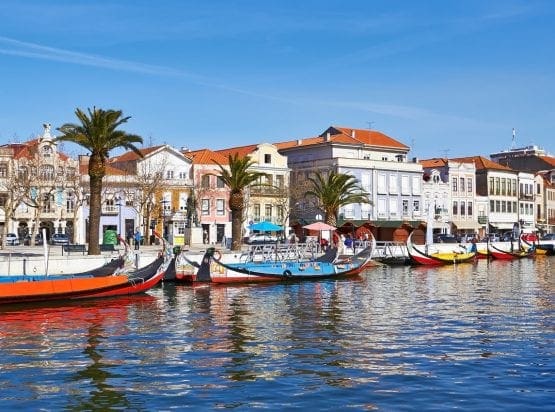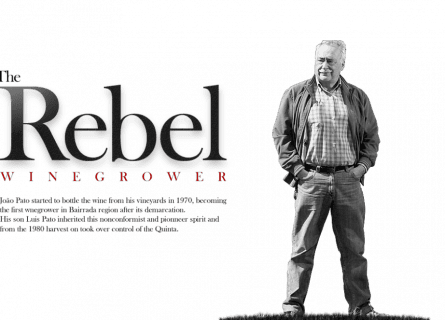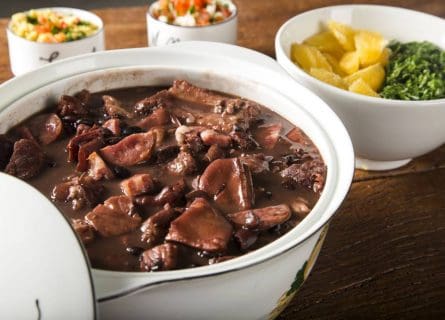Uncover Aveiro's vibrant flavors and culinary gems with our expert guides. Plan an unforgettable trip now!
Read more
EXPLORE ALL OUR GUIDES TO PORTUGAL'S WINE REGIONS
Last updated: November 27, 2023
Bairrada has spent the last 12 years refining its vinous offer. Situated north of Portugal’s handsome capital Lisbon, Bairrada was not held in great esteem in the 20th century. However, its signature red grape, Baga, was cropped at high yields and handled, shall we say, in a very rustic manner; these uncompromising wines had more astringent tannin than a truckload of unripe Sangiovese!
Fortunately, visionaries like Luis Pato understood that Bairrada would slide into obscurity unless the region changed its ways. So, perfectly timed to coincide with Portugal’s entry into the global stage, Pato fashioned a new style of red Bairrada that would appeal to hipster sommeliers and their trend-conscious clientele. It is reminiscent of Burgundy in its red fruit bouquet, freshness, and elegant tannin. Aromatically expressive and very pretty, it is a wine built for the modern age. Today, Bairrada continues to export ever-growing volumes of premium Baga: wines of supreme elegance and complexity from this trendy grape. Portuguese wine lovers prefer their wines to have moderate alcohol and approachable tannin (we agree with them), although good Baga will improve in bottle for over a decade.
Nevertheless, you can drink Baga young, old, or anywhere in the middle; enjoy it with food or without, and you can get a fantastic wine for the price of an entry-level Burgundy. It is where people graduate when tired of the same old choices and ubiquitous varietals. And it’s delicious.
Yet Bairrada is producing some excellent white wines as well. The local pale-skinned grape, Bical, is Portugal’s answer to the Sauvignon Blanc craze. But it’s a tad more interesting.
Bairrada is no stranger to viticulture. Although the Romans are widely credited with popularizing wine growing in Portugal, it is important to remember that both the Phoenicians and Greeks were aficionados of the grape, having established several trading colonies along the Iberian Peninsula long before the Romans arrived. However, there is no doubt that growers owe much to the Romans and their epoch-defining investments in Portuguese vineyards. This legacy endured for centuries until the Western Roman Empire fell apart in 476 AD. The period that directly followed, known colorfully as the ‘Dark Ages,’ is a gross oversimplification of the complexities of the time. After the Moors established dominion over (most) of the Iberian Peninsula in the 8th century, wine production fell dramatically across Portugal’s landscape. However, the Moors have also been credited with many notable achievements in architecture, mathematics, and gastronomy.
Nevertheless, the modern history of Bairrada began during the Christian reconquest of northern Portugal in the 10th century. A hundred years later, Bairrada became part of the newly created kingdom of Portucale – a gift from the monarch Afonso Henriques. By the 1600s, viticulture was once again thriving in the hills of Bairrada: winegrowers in the Douro used Bairrada-grown grapes to beef up their wines. Yet the region was becoming far more than simply an appendage to the Douro’s wine industry.
In 1887, António Augusto de Aguiar founded Bairrada’s inaugural wine school – an institution that continues to drive innovation across the zone. Traditional method sparkling wines, based on indigenous varieties, were one of the school’s first key experiments, in addition to mapping out the area’s distinct terroirs. Regrettably, forced collectivization in the mid-20th century did Bairrada’s reputation no favors. It was only thanks to the hard work of Luís Pato and others that the industry bounced back in the early 00s. We owe him a great deal.
Equidistant (more or less) to Lisbon and Oporto, Bairrada has a great deal to offer the curious oenophile. It is part of the Beiras region of central-northern Portugal, flanked by the Atlantic to the west and Spain to the east. As you might expect, Bairrada wines are heavily influenced by the ocean’s proximity – its vineyards are relatively damp, and rot can be an issue in difficult vintages. Indeed, unlike the neighboring terrain of Dão, Bairrada is not protected by two mountain ranges against the inevitable Atlantic squalls.
“My father always liked Bairrada: the best wines are exceptional. But viticulture is difficult because it’s very close to the Atlantic Ocean, which brings a lot of humidity; Baga is very sensitive to botrytis,” says Daniel Niepoort, son of Dirk Niepoort. “However, the soil is super interesting – it reminds us of burgundy ore; even more, we could call Bairrada the ‘little Piemonte.’ Very chalky! So, you can make great wines with structure and freshness in a very elegant way.”
Niepoort underlines the wonderful upside to the region’s temperature climate and mild falls. Unlike many parts of southern Europe, drought and excessive ripeness is not usually an issue in Bairrada; some of Portugal’s freshest and raciest whites – and reds – emanate from the region. Moreover, there is a variety of exceptional quality soils in the zone, including the much-feted calcareous terroir of central Portugal. Almost without exception, the best wines tend to come from this porous (and permeable) clay-limestone terroir, responsible for the wine’s innate freshness and ‘bite.’

One of Bairrada’s most talented and respected winemakers, Luis Pato, described the Baga grape as a Portuguese facsimile of Nebbiolo, Piedmont’s leading red variety. Of course, from the perspective of the Italians, that may be overstating the case a bit! Yet there are some undeniable parallels, not least Baga’s tendency to produce wines with high acid and occasionally astringent tannin. And, like the Piedmontese, winegrowers in Bairrada have been focusing on fashioning a more approachable style of wine. Luis Pato pioneered a holistic approach to Baga, combining improved viticulture – green harvesting, etc. – with destemming, shorter macerations, and aging in French oak. This paradigm of lower yields and gentle extraction is now producing a ‘kinder,’ gentler style of Baga wine that can be enjoyed from the get-go. Dirk Niepoort, the iconic Douro winemaker who purchased Quinta do Baixo in 2012, is a major advocate of this approach.
Today, most wine is sold as Bairrada DOC (Denominação de Origem Controlada). The appellation framework, created in 1980, regulates the grape varieties used, production methods, and yield. It includes a set of rules that govern the production of sparkling – white and rosé – and still-white wines. Bairrada’s growing volume of premium whites includes saline beauties and powerfully structured blends – rich and full-bodied. As elsewhere, fermentation methods and attitudes to maturation in barrique will vary from producer to producer. A recently revived curiosity, Licoroso Baga, is a style of fortified red that is seldom exported. Nevertheless, it boasts a separate appellation and local fan club.
After years of neglect and decline, Bairrada has become the darling of buyers and sommeliers worldwide. The green and undulating region has a fabulous selling point in its indigenous vines, varieties reared for the Atlantic climate, and the environment itself. Although Baga is frequently compared to Nebbiolo, there is something quite Burgundian about red Bairrada; that ethereal perfume and crisp, juicy fruit nourish the soul. Moreover, the region’s wines offer moderate alcohol and beautiful freshness – two qualities consumers greatly desire more than ever. So it is little surprise that exports and recognition continue to grow. The global market, quite frankly, does not need any more bland Sauvignon Blanc. On the contrary: it demands originality, authenticity, and verve.
However, Bairrada, like all regions, has its fair share of controversies and arguments. Not everyone in Portugal is a fan of Baga or the country’s autochthonous grapes; scores of old bush vines were pulled out in the late 1900s as growers focused on internationally recognized varieties. The situation was compounded in 2003 when the appellation body permitted adding additional grape varieties into red Bairrada wines. Traditionally, Baga was not blended in the vineyards of Bairrada and Dão, which is quite unusual for Portugal. But some wineries, such as Quinta das Bageiras, blend in other grapes to make their reds more approachable. As a result, Touriga Nacional, Cabernet Sauvignon, Merlot, and Syrah are becoming more popular. And yet, for some, it is almost sacrilegious to use French grapes to standardize a unique Portuguese wine style.
Thankfully, there is a counter-movement to the slightly worrying obsession with using ubiquitous varietals to ‘smooth out’ Baga’s occasionally rough tannins; terroir character and nuance are arguably sacrificed in the process. Baga friends, a group of producers determined to champion the grape, have been very influential in stopping growers from removing any more of these remarkable old parcels. Slowly, the battle is being won.
Baga is a dark-skinned grape varietal grown mainly in the central Portuguese region of Bairrada DOC, producing high acidity tannic wines.
Find out moreDiscover the irresistible allure of Cabernet Sauvignon—a worldwide favorite with robust, dark-bodied flavor. Unleash your wine journey today!
Find out moreUncover the allure of Periquita grape varietal, a hidden gem in Portugal's wine tradition. Experience new flavors and sensations with this authentic red wine.
Find out moreMerlot is the most cultivated grape in Bordeaux and closely related to Cabernet Franc
Find out moreTouriga Nacional red varietal is a dark-skinned grape predominately grown in Douro and Dão. In the Douro, it is used as a blending grape in Port wines.
Find out moreBical grape produces crisp, refreshing white wines with high acidity and subtle mineral notes. Perfect with seafood and fresh dishes. Discover more.
Find out moreDiscover the unique character of the Cercial grape, a Portuguese white variety known for its high acidity, citrus flavors, and mineral notes. Learn more here.
Find out moreMaria Gomes, a Portuguese white grape variety, is known for its floral and fruity aroma and delicate flavor profile. It produces crisp, refreshing wines with notes of citrus, peach, and pear, and is often used in blends to add complexity and balance. Easy-drinking and food-friendly

It is exceedingly easy to dine like a Portuguese monarch in the vineyards of Bairrada. The region has numerous culinary specialties, including ‘Leitao’ (roast suckling pig) and pork knuckle – recognize a theme here? – and a pork stew is known as ‘feijoada.’ The last delicacy, much-loved across central Portugal, is a spicy concoction of chorizo, various types of local sausage, and paprika. The Atlantic, meanwhile, provides a bounty of fresh seafood and shellfish: squid, mussels, oysters, langoustines, crab, and lobster can all be enjoyed in the region’s many excellent restaurants and tavernas.
If you would like us to customize an exclusive luxury tour, contact us and let us know your travel plans. We offer luxury food and wine tours for private groups of a mininium two guests. In addition, all of our private, chauffeured tours are available year-round upon request.

